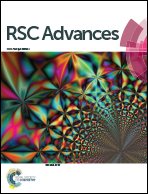Boundary lubricating properties of hydrophobically modified polyacrylamide
Abstract
Boundary lubrication has been studied in many associative bio-systems, including synovial fluids, phosphatidylcholine vesicles and mucus. However, comprehensive tribological investigations on synthetic associative polymers have not received sufficient attention. In this paper, we investigated the frictional behavior of polydimethylsiloxane (PDMS) rubber substrates lubricated with a universal and typical synthetic hydrophobically modified polyacrylamide (PAM) aqueous solution. Boundary lubrication was only observed at high concentrations above which intermolecular association was strong while adsorption mass and conformation were constant. Direct dilution with excessive water and replacement of concentrated solution with water both gave the PDMS the same boundary friction coefficient as that of lubrication only with water. Addition of surfactant that could disrupt the interchain association evidently destroyed the boundary lubrication of the hydrophobically modified PAM aqueous solution. Results revealed that interchain association, rather than the robust adsorption layer, plays a significant role in boundary lubrication of compliant PDMS–PDMS contact. This finding may provide new insight into the understanding of the boundary lubrication mechanism and developing novel boundary lubricants for artificial cartilage or consumer industry.


 Please wait while we load your content...
Please wait while we load your content...